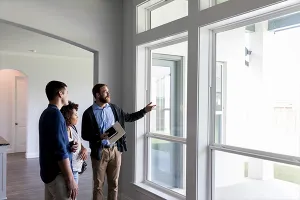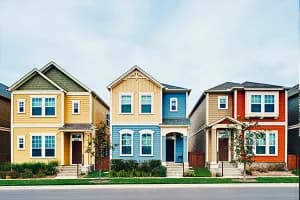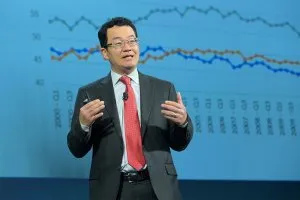
More homes are finally hitting the market—and buyers are taking notice. Existing-home sales rose 2% in July from the previous month and inched above last year’s pace, as home buyers respond to the largest inventory of homes for sale in years, the National Association of REALTORS® reported Thursday. Existing-home sales reflect completed transactions for single-family homes, townhomes, condos and co-ops.
“Home buyers are in the best position in more than five years to find the right home and negotiate for a better price,” says Lawrence Yun, NAR’s chief economist. “Current inventory is at its highest since May 2020, during the COVID lockdown.” The number of For Sale signs is up nationally by about 16% over last year’s levels.
Home prices are moderating, too. The median existing-home price was $422,400 in July, representing just a 0.2% increase from a year ago, NAR reports. Month-to-month, home price increases are occurring at a noticeably slower pace.
That “ever-so-slight improvement in housing affordability is inching up home sales,” Yun says. “Wage growth is now comfortably outpacing home price growth, and buyers have more choices.”
Some Markets See Price Adjustments, But Sellers Still Faring Well
More listings and stiffer seller competition may be starting to rein in home price growth in many markets. The essentially flat annual home price growth suggests that about half of the country is experiencing price reductions, Yun says. (Read more: Listing Price Reduction? How to Navigate It With Buyers, Sellers)
But home sellers shouldn’t fret: Most are still faring well financially, and no major market declines appear on the horizon, Yun says. In July, foreclosures and short sales made up just 2% of transactions, remaining near historic lows.
Further, “the market’s health is supported by a cumulative 49% home price appreciation for a typical American homeowner from pre-COVID July 2019 to July this year,” Yun says. Over the last five years, the average homeowner’s wealth has increased by $140,900, NAR’s research shows.
For buyers, however, the mix of rising inventory and slower price growth may offer more negotiating power than they’ve had in years. Home builders also are making deeper concessions: In August, 37% of builders reported lowering their prices—the highest share since 2022—with average price cuts of about 5%, according to the National Association of Home Builders. Two-thirds of builders said they’re offering incentives—such as mortgage rate buydowns or closing cost assistance—which marks the highest use of sales incentives in at least five years.
Buyers are responding to the discounts in some markets. Condominium sales, for instance, increased in July in the South—a region where prices have fallen over the past year, Yun notes.
Also, mortgage applications—a gauge of future homebuying activity—remain well-above last year’s levels. Purchase applications were up 23% from the same week a year ago, the Mortgage Bankers Association reported Wednesday. That suggests more prospective buyers are preparing to enter the market.
But Don’t Discount the Competition
While the market may be opening up with more choices, buyers still can face plenty of competition. In July, 21% of homes sold above the asking price, and the average listing drew 2.1 offers, according to the latest REALTOR® Confidence Index, which reflects responses from 1,500 real estate professionals about their most recent transactions. Fifty-eight percent of real estate pros also reported that properties sold in less than one month.
Competition from all-cash buyers also remains strong. Cash transactions comprised 31% of existing-home sales in July, remaining at historical highs, NAR reports. This growing segment of buyers bypassed the elevated mortgage rates that have been blamed for sidelining many would-be buyers during the spring and summer months. First-time buyers, for example, accounted for 29% of July’s existing-home sales, well below their typical 40% share.
Regional Breakdown
Here’s a closer look at how existing-home sales fared in July across the country, according to NAR’s latest report:
- Northeast: Sales rose 8.7% in July, reaching an annual rate of 500,000. Existing-home sales are up 2% annually. Median price: $509,300, up 0.8% from a year ago.
- Midwest: Sales fell 1.1% in July, the only region to post a monthly decline last month. Yet, sales were still up 1.1% annually at an annual rate of 940,000. Median price: $333,800, up 3.9% from a year ago.
- South: Sales rose 2.2% in July compared to June to an annual rate of 1.85 million. Sales are also up by 2.2% year-over-year. Median price: $367,400, down 0.6% from a year earlier.
- West: Sales increased 1.4% in July to an annual rate of 720,000. But sales were down 4% compared to a year ago. Median price: $620,700, down 1.4% from July 2024.










